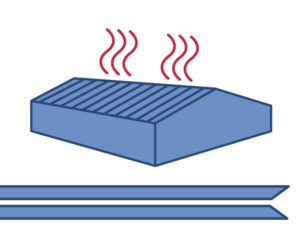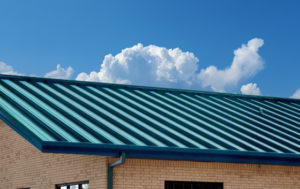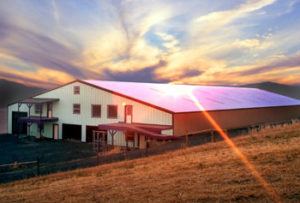The Pros and Cons of Choosing Cool-Coated Steel Roof Panels
Many people now opt for cool-coated metal roof panels when ordering their steel building. In locations with sizzling summer heat, cool metal roofing slashes utility bills.
 And saving energy benefits both you and our environment.
And saving energy benefits both you and our environment.
In fact, buildings gobble up 70% of our electricity in the U.S. According to the U.S. Energy Information Administration, residential and commercial structures consume 40 quadrillion British thermal units of energy annually!
What exactly are Cool Metal Roof Panels?
In a previous blog we covered why PBR panels are preferred over R-panels. In essence, cool-coated panels are PBR or standing seam roof panels painted with a special baked-on, ultra-reflective paint.
How do Cool Metal Steel Roof Panels Work?
 All roofing absorbs heat from the sun. The darker the roofing material is, the hotter the roof. In fact, dark roofing also absorbs 90% of the solar energy hitting its surface.
All roofing absorbs heat from the sun. The darker the roofing material is, the hotter the roof. In fact, dark roofing also absorbs 90% of the solar energy hitting its surface.
In addition, a hot roof transfers heat into a building. Already working overtime to fight sweltering summer temperatures, an air conditioning system must battle even harder to combat heat transference from the roof.
New technology in reflective paints allows cool-coated metal roofing to reflect the sunlight and ultraviolet (UV) radiation back into the atmosphere. That cools the surface of the roof as much as 60 degrees!
What are the Advantages of Cool-Coated Cladding on a Steel Building?
Reflective metal roof panels deliver impressive benefits in heat-prone climates:
- A cooler roof equals a cooler building interior. Cool-coated panels slash air conditioning costs by 15% or more. In hot weather, structures remain more comfortable, including in building areas without climate control.
- Durable cool-coated pigments maintain 95% of their reflectivity over years of use.
- A cooler roof reduces strain on the building’s air conditioning system. A less stressed air conditioner will last longer.
- Even areas surrounding the building will be cooler with reflective panels.
- Harmful UV rays bounce away from the roof, drastically decreasing chemical damage to the roof itself.
- Extreme heat causes thermal fatigue on any roofing material. Therefore, cooler roof temperatures extend the lifespan of the roof.
- Surprisingly, reflective paints work great in any color. There is no need to stick to white if you want a more vibrant color.
What Environmental Benefits do Reflective Metal Roof Panels Provide?
Cool metal roofing panels bring environmental benefits, too, by:
- Reducing strain on power plants, helping to avoid blackouts and power outages
- Using less energy, thus dropping the levels of pollution and chemical emissions in power plants
- Relieving the urban heat island effect
- Extending the life of the roof
- Reducing the eleven million tons of roofing materials discarded into overcrowded landfills each year
As an added green benefit, all steel roof panels contain a high recycled content. At the end of their lifecycle, steel panels are 100% recyclable, too.
Are Cool Panels Right for Every Metal Building?
 Cool panels work best in hot southern climates. Areas with mild summers or bitter winters will not benefit from cool metal panels.
Cool panels work best in hot southern climates. Areas with mild summers or bitter winters will not benefit from cool metal panels.
In extremely moist, tropical climates, cool roofing tends to attract algae or mold. (However, some cool panel brands include algae and mold-fighting chemicals in the reflective paint to mitigate the problem.)
In some areas, the reflective glare of cool metal roofs might annoy neighbors— especially if their taller structures overlook the cool-panel-clad structure.
Conclusion
Using cool-coated metal roofing on a prefabricated steel building saves energy and money— but only if you live in an area with blistering summers.
RHINO Cool Metal Cladding
Speak to a RHINO metal building specialist today at 940.383.9566. Ask them about the optional cool-coated steel roof panels. They will help you decide if cool metal roofing is right for your building project.
RHINO Steel Building Systems offers cool-coated metal cladding in a palette of striking colors.
For more metal building ideas, please visit the RHINO gallery.
(Updated 2-19-2020. Originally published 12-8-2017.)
